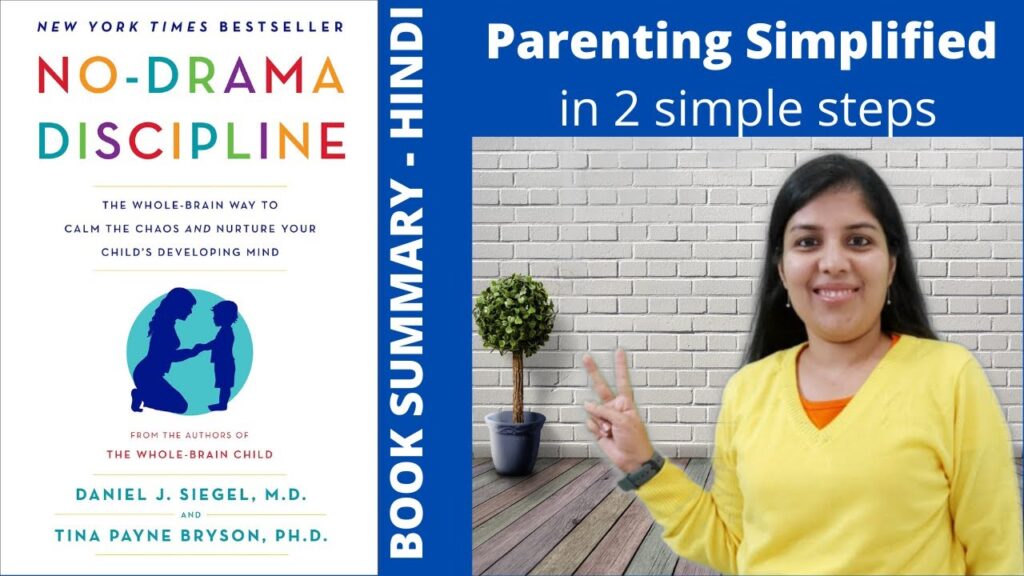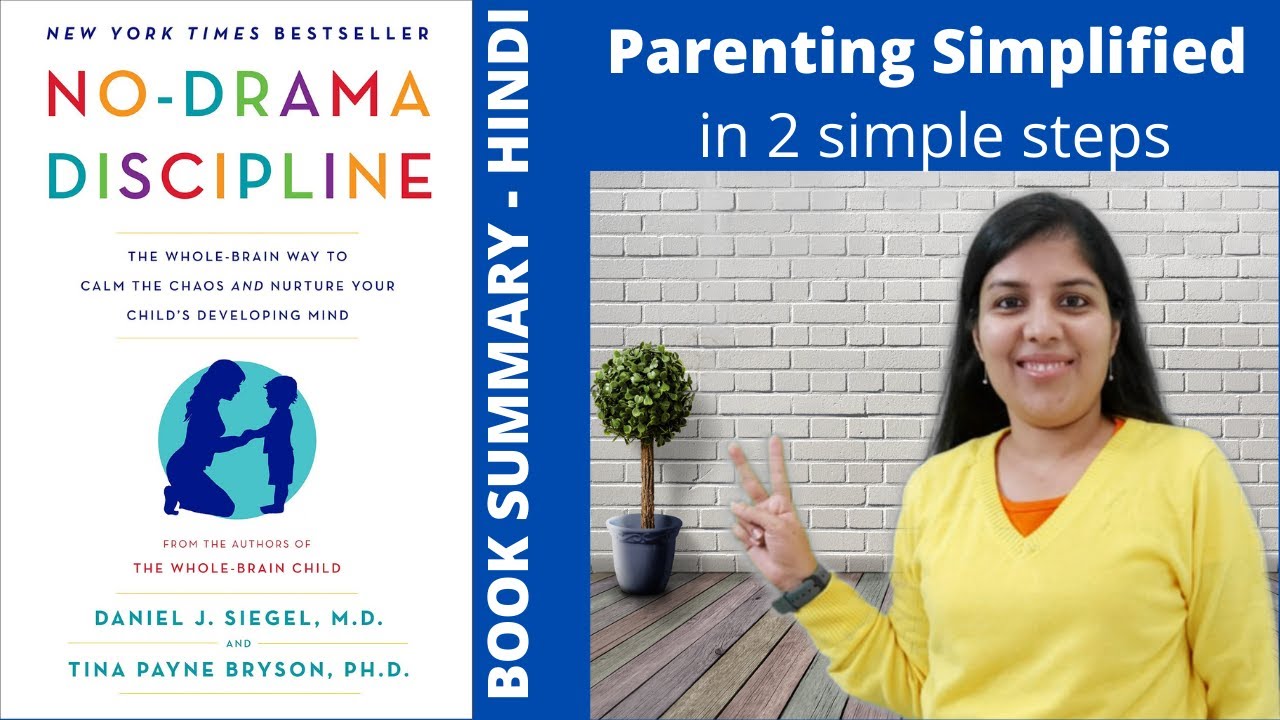
Unlocking Harmonious Homes: A Deep Dive into ‘No-Drama Discipline’
Parenting is an intricate dance, a delicate balance between nurturing and guiding. Often, the steps get tangled, leading to frustration and, yes, drama. Enter ‘No-Drama Discipline,’ a book co-authored by Daniel J. Siegel, M.D., and Tina Payne Bryson, Ph.D., that offers a refreshing perspective on raising emotionally intelligent and resilient children. This isn’t about suppressing emotions or becoming a pushover; it’s about understanding the developing brain and responding in ways that foster connection and cooperation. This article will explore the core concepts of ‘No-Drama Discipline,’ its practical applications, and why it has resonated with parents worldwide.
The Brain-In-Hand Model: Understanding Your Child’s Mind
One of the book’s most memorable and accessible concepts is the ‘Brain-In-Hand’ model. This visual representation helps parents understand how the brain works, specifically the interplay between the rational and emotional parts. Imagine holding your hand up, fingers curled over your thumb. The fingers represent the higher, more rational parts of the brain (the prefrontal cortex), responsible for decision-making, empathy, and self-awareness. The thumb represents the emotional center (the limbic system), responsible for strong feelings, impulses, and survival instincts. When a child is upset, the ‘lid’ (fingers) can ‘flip,’ disconnecting the rational brain from the emotional brain. This explains why children often struggle to reason or control their behavior when they are overwhelmed with emotions.
‘No-Drama Discipline‘ emphasizes the importance of connecting with your child emotionally before attempting to redirect their behavior. When the ‘lid’ is flipped, lecturing or punishing is ineffective. Instead, the book advocates for empathy, validation, and creating a sense of safety.
Connect and Redirect: The Core Strategy
The heart of ‘No-Drama Discipline‘ lies in its connect-and-redirect approach. This involves two key steps:
- Connect: Before addressing the misbehavior, focus on connecting with your child emotionally. This could involve acknowledging their feelings, offering comfort, or simply being present and listening. Remember, the goal is to help them feel understood and safe.
- Redirect: Once your child is calm and feels heard, you can begin to redirect their behavior. This might involve setting limits, explaining consequences, or helping them find alternative solutions. The key is to do this in a calm, respectful, and collaborative manner.
This approach is not about condoning misbehavior; it’s about teaching children how to manage their emotions and make better choices in the future. By connecting first, you create an opportunity for learning and growth.
Dispelling Myths About Discipline
‘No-Drama Discipline‘ challenges many traditional parenting beliefs about discipline. It argues that punishment, yelling, and time-outs can be counterproductive, especially in the long run. These methods often rely on fear and control, which can damage the parent-child relationship and hinder the development of emotional intelligence. The book suggests that discipline should be viewed as an opportunity to teach and guide, not to punish and control. This aligns with research showing that positive parenting techniques are more effective in promoting healthy child development.
The book also tackles the myth that children are deliberately trying to be difficult. It explains that much of children’s misbehavior stems from developmental limitations, unmet needs, or difficulty managing emotions. By understanding the underlying reasons for their behavior, parents can respond with more empathy and effectiveness.
Practical Tools and Techniques
‘No-Drama Discipline‘ provides a wealth of practical tools and techniques that parents can use in everyday situations. These include:
- Time-In: Instead of time-outs, which can be isolating and punitive, the book suggests ‘time-ins.’ This involves staying with your child while they are upset, offering comfort and support. This helps them regulate their emotions and learn coping skills.
- Reaching In: This technique involves helping your child understand their own emotions and experiences. By asking questions, reflecting on their feelings, and validating their perspective, you can help them develop self-awareness and emotional regulation.
- Attuning: This is the process of paying attention to your child’s nonverbal cues and responding in a way that shows you understand their feelings. This can involve making eye contact, using a gentle tone of voice, or offering a comforting touch.
These techniques are designed to foster connection, empathy, and understanding, which are essential for effective discipline.
The Long-Term Benefits of No-Drama Discipline
The benefits of ‘No-Drama Discipline‘ extend far beyond immediate behavior management. By focusing on connection and emotional intelligence, parents can help their children develop crucial life skills, such as self-regulation, empathy, and problem-solving. These skills are essential for success in school, relationships, and life in general.
Children who are raised with ‘No-Drama Discipline‘ are more likely to be resilient, emotionally stable, and able to navigate challenges effectively. They also tend to have stronger relationships with their parents and others. This approach fosters a sense of trust, security, and connection, which are essential for healthy development.
Addressing Common Concerns and Criticisms
While ‘No-Drama Discipline‘ has been widely praised, it has also faced some criticisms. Some parents worry that it is too permissive or that it will lead to spoiled children. However, the book emphasizes that setting limits and enforcing consequences are still important. The key is to do this in a way that is respectful, empathetic, and focused on teaching.
Another concern is that the approach requires a lot of time and patience. It can be challenging to connect with your child emotionally when you are tired, stressed, or overwhelmed. However, the book suggests that even small moments of connection can make a big difference. It also encourages parents to prioritize self-care so that they can be more present and responsive to their children’s needs.
The Science Behind the Approach
The principles of ‘No-Drama Discipline‘ are grounded in neuroscience and attachment theory. Research has shown that secure attachment relationships are essential for healthy brain development and emotional well-being. When children feel safe and connected, they are more likely to develop self-regulation skills and the ability to cope with stress.
The book also draws on research about the developing brain. It explains how the prefrontal cortex, which is responsible for higher-level thinking and emotional regulation, is not fully developed until the mid-twenties. This helps parents understand why children sometimes struggle to control their impulses and make good decisions.
Implementing No-Drama Discipline in Your Home
Implementing ‘No-Drama Discipline‘ requires a shift in mindset and a willingness to try new approaches. Here are some tips for getting started:
- Educate yourself: Read the book and learn about the principles of ‘No-Drama Discipline.’
- Practice empathy: Try to see things from your child’s perspective and understand their feelings.
- Connect before you correct: Always focus on connecting with your child emotionally before addressing their behavior.
- Set clear limits: Make sure your child knows what is expected of them and what the consequences will be for misbehavior.
- Be consistent: Enforce limits and consequences consistently.
- Prioritize self-care: Take care of your own needs so that you can be more present and responsive to your children.
‘No-Drama Discipline’ and Different Age Groups
The principles of ‘No-Drama Discipline‘ can be applied to children of all ages, although the specific techniques may need to be adapted. For example, with younger children, you may need to rely more on physical comfort and reassurance. With older children, you can engage in more problem-solving and collaborative discussions.
The book provides specific examples of how to apply ‘No-Drama Discipline‘ to different age groups, from toddlers to teenagers. It also addresses common challenges that arise at different stages of development.
Conclusion: Creating a More Connected and Harmonious Family
‘No-Drama Discipline‘ offers a powerful and practical approach to parenting that can transform your family dynamics. By focusing on connection, empathy, and emotional intelligence, you can create a more harmonious and supportive home environment. This book isn’t a quick fix, but a long-term investment in your child’s well-being and your relationship with them. It encourages parents to move away from punitive measures and towards a model of discipline that teaches, guides, and fosters emotional growth. Ultimately, ‘No-Drama Discipline‘ provides a roadmap for raising children who are not only well-behaved but also emotionally intelligent, resilient, and capable of thriving in all aspects of their lives. It’s about building a stronger, more connected family, one interaction at a time. [See also: Positive Parenting Techniques] [See also: Understanding Child Development] [See also: Building Emotional Intelligence in Children]

